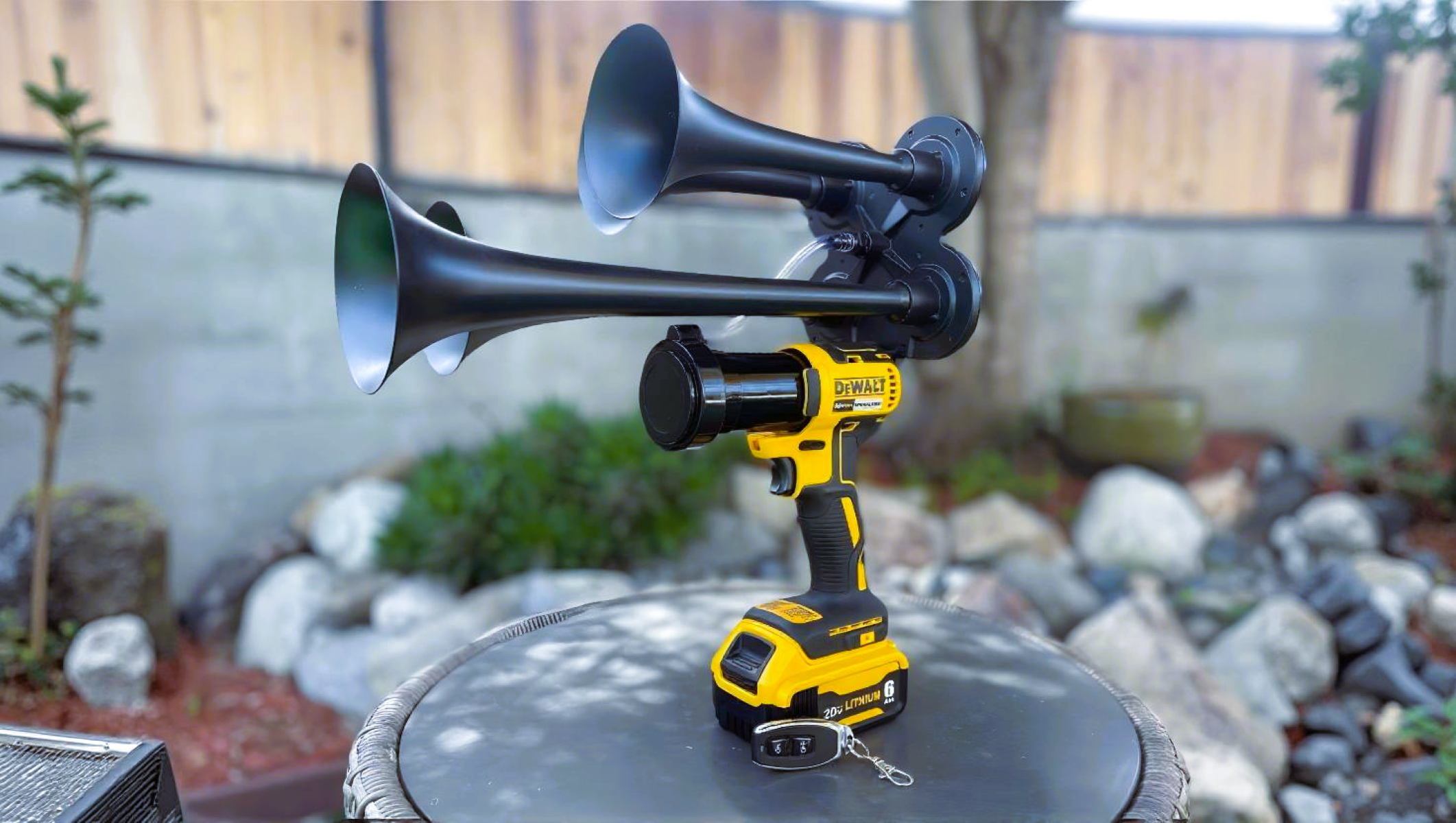In the modern world, safety is of utmost importance, and one key component of ensuring safety is the use of warning systems. Among the most effective and widely used are acoustic warning systems, which rely on sound to alert people to potential dangers. Whether it’s a fire alarm, a siren at a construction site, or an emergency evacuation signal, acoustic warning equipment plays a critical role in saving lives. In this article, we will explore the science behind these powerful devices, how they work, and why they are so effective.
What is Acoustic Warning Equipment?
At its core, acoustic warning equipment is designed to use sound to alert individuals to potential dangers or emergencies. These systems are vital in environments where visual alerts may not be enough or where people need to respond quickly to a hazard. From loud sirens and horns to simpler buzzers and bells, the purpose of acoustic warning systems is clear: to grab attention and signal that action is required. Their primary role is to ensure that the emergency is noticed, especially when people might be in situations where they are distracted or not looking at visual cues.
These systems are specifically engineered to produce sound that can be heard over long distances and through various environmental factors, such as background noise, weather conditions, or other disruptions. This capability is essential in large spaces, open areas, or locations like factories, construction sites, or even outdoor environments, where other forms of communication might be ineffective. Acoustic warning systems are designed to cut through the noise, ensuring that people are aware of an emergency regardless of external circumstances.
The power of sound as an alert mechanism lies in its ability to travel across various environments. Unlike visual signals that require direct line of sight, sound can spread across large distances, making it effective in alerting individuals even when they are not in the immediate vicinity of the danger. This is why sound-based warning systems are often a preferred choice in public spaces, large factories, or even in vehicles, where people may not always have a clear view of a visual alert.
Ultimately, the goal of acoustic warning equipment is to provide a straightforward and effective means of communication during critical moments. By utilizing the natural human response to loud, attention-grabbing sounds, these systems play a crucial role in public safety, workplace environments, and emergency situations, ensuring that people are alerted quickly and can take the necessary actions to protect themselves.
How Acoustic Warning Systems Work
Acoustic warning systems are engineered to generate high-decibel sounds that quickly capture attention and alert individuals to potential hazards. These systems usually produce continuous tones or a series of beeps, often accompanied by visual signals such as flashing lights. The effectiveness of these systems comes down to the science behind the sound they produce and how it’s designed to reach the human ear. Here’s a breakdown of how these systems work:
- The Physics of Sound
- Sound is a mechanical wave that moves through a medium like air. When a sound is made, it creates vibrations that form pressure waves, which travel outward from the sound’s source.
- Once these waves reach our ears, they are perceived as sound by our brain. The ability to interpret and react to these vibrations is crucial for the functionality of warning systems.
- Frequency of Sound
- Frequency refers to the rate at which sound waves oscillate. Higher frequencies produce higher-pitched sounds, while lower frequencies produce deeper tones.
- The choice of frequency is vital in warning systems. High-pitched tones are more likely to catch attention because they stand out in various noise environments.
- Amplitude of Sound
- Amplitude determines the strength or intensity of sound waves, directly affecting how loud the sound is. The greater the amplitude, the louder the sound.
- A higher amplitude ensures that the warning signal can be heard over long distances or in noisy environments.
- Sound Wave Design for Long-Distance Travel
- The combination of frequency and amplitude allows engineers to design sound waves that are not only attention-grabbing but also capable of traveling long distances.
- These systems are fine-tuned to balance loudness and clarity, ensuring they are effective in diverse environments and can be heard even from afar.
- Why Certain Sounds Are More Effective
- Certain frequencies and sound patterns naturally attract more attention from the human ear. High-pitched, fluctuating tones—like those used in fire alarms—are more likely to be noticed than low, steady sounds.
- Our auditory system is evolutionarily attuned to detect these types of sounds because they may signal danger, such as the calls of prey animals or alarms from other humans.
- Sudden, loud noises are more effective at grabbing attention compared to continuous or gradual sounds. This is why warning systems often feature sharp, intermittent beeps or sirens that break the normal ambient noise, signaling urgency.
- Breaking the Sound Pattern
- Humans are particularly sensitive to disruptions in a steady environment. A sudden loud noise can trigger a response much faster than a gradual increase in sound.
- Acoustic warning systems are designed to exploit this sensitivity by creating jarring, attention-grabbing noise patterns, like alternating beeps or wailing sirens, that contrast with the surrounding quiet or background noise.
Different Types of Acoustic Warning Systems
| Type of Acoustic Warning System | Description | Sound Design | Power Output | Common Use Cases |
| Sirens and Horns | Commonly used in large outdoor areas or urban environments. They are designed to be heard over long distances. | Can be mechanical or electronic, producing loud, attention-grabbing sounds. | High output, capable of covering large areas. | Tornado warnings, fire alarms, tsunami alerts. |
| Mechanical Sirens | Use a rotating drum and a whistle-like mechanism to generate sound. The rotation creates a cyclic, increasing sound. | Rotating drum mechanism that creates a varying, cyclic tone. | Powerful enough to reach long distances. | Outdoor emergency warning systems. |
| Electronic Sirens | Utilize electronic components to create modulated sounds. These can be programmed for various warning patterns. | Consistent, modulated tones that can vary in pitch and duration. | Flexible power options, often adaptable to different needs. | Urban emergency systems, military alarms. |
| Industrial Warning Systems | Used in noisy industrial environments to ensure worker safety, often in factories or construction sites. | Loud, often shrill tones that cut through machinery noise. | Medium to high output, depending on the environment. | Factory alarms, construction site hazards. |
| Bells and Buzzers | Smaller and less intense than sirens, typically used for shorter-range warnings. | Steady or intermittent beeping sounds. | Lower power, localized to specific areas. | Factory start/stop signals, small-scale hazards. |
| Rotating Light Signals | Often paired with sound, these systems provide visual alerts in industrial or emergency settings. | Combination of flashing lights with an optional tone. | Low to medium output, mainly visual. | Factory machines, construction site safety. |
| Vehicle Warning Systems | Common in vehicles, including horns and reversing alarms, designed to alert pedestrians and other drivers. | Short, sharp honking or beeping sounds. | Medium output, effective within vehicle proximity. | Car horns, emergency vehicle sirens, backup alarms. |
| Emergency Vehicle Sirens | Specially designed for emergency vehicles to alert others to their presence, ensuring safe passage. | High-pitched wailing or rotating sirens. | High output, designed for immediate attention. | Ambulance, fire trucks, police cars. |
| Marine Warning Systems | Used in maritime environments, such as on ships or near docks, to alert to navigational hazards. | Low-frequency blasts or a series of toots. | High-powered, often designed to cut through ambient water sounds. | Fog alerts, collision warnings, distress signals. |
| Worksite Warning Systems | Used to alert workers to specific dangers or operational signals. Often found in mines or construction zones. | Low to high-frequency tones with potential voice commands. | Medium power for localized warnings. | Machinery operation, hazardous worksite alerts. |
Design Considerations for Acoustic Warning Systems
When designing an effective acoustic warning system, engineers must carefully consider several key factors to ensure the system performs optimally in different environments and conditions. Here are the main considerations that contribute to the design of these critical safety devices:
The frequency range of the sound produced by a warning system is a crucial element. The typical range of human hearing spans from 20 Hz to 20,000 Hz, so acoustic warning devices usually emit sounds within this spectrum. However, some frequencies are more effective at grabbing attention than others. Warning systems often use modulated tones, which shift in frequency over time, making them easier to hear and more noticeable than steady tones. This variation in pitch helps to alert individuals quickly. For instance, fire alarms frequently employ pulsating tones with alternating frequencies to maximize their attention-grabbing power.
Another important factor is the sound power and decibel levels. The decibel level of the emitted sound determines how far it can travel and how well it can penetrate background noise. A typical fire alarm operates within the range of 85-110 dB, which is usually sufficient to be heard over typical indoor noise. However, in more open or noisy environments, such as outdoor areas, higher decibel levels are required to ensure the alarm can be heard over long distances. For example, tornado sirens can exceed 120 dB, which is powerful enough to carry across miles and ensure that individuals are alerted in case of emergency.
The environment in which the warning system will be used is also a key consideration in its design. In outdoor open areas, the sound must be loud enough to travel long distances, while in confined spaces, the system must be carefully calibrated to avoid overwhelming people with excessive volume. Additionally, environmental factors such as weather conditions can impact the effectiveness of the sound. Rain, wind, and other weather elements can dampen sound propagation, so outdoor systems must be engineered to perform well in these challenging conditions. Acoustic warning devices must also be designed to withstand various weather-related issues to ensure reliable performance.
Why Acoustic Warning Systems Are So Effective
The effectiveness of acoustic warning systems is rooted in their ability to immediately grab attention and alert people to danger. The power of sound enables these systems to cut through distractions, whether it’s the noise of traffic, industrial machinery, or other background sounds. Here are some key reasons why these systems are so effective:
- They Are Easily Perceived: Certain sounds are naturally more attention-grabbing. Loud, high-pitched noises are more likely to be heard and noticed, even if individuals are engaged in other tasks or surrounded by distractions. This makes it easier for people to detect a potential threat, even if they are in a noisy environment.
- They Are Immediate and Unavoidable: Unlike visual warnings, which may be missed if someone isn’t looking in the right direction, acoustic warnings are unavoidable. Sound is omnidirectional, meaning that it can be heard from any angle. No matter where a person is relative to the sound source, they are likely to hear it, ensuring they are alerted.
- They Create Urgency: Loud, abrupt sounds can trigger a fight-or-flight response, prompting people to take immediate action. The urgency of the sound can drive individuals to evacuate a building, seek shelter, or follow other safety protocols. The sharpness and power of the sound act as a strong motivator for fast response.
- They Can Be Recognized from a Distance: The ability to be heard over long distances makes acoustic warning systems ideal for large-scale emergencies. Individuals who are far away from the source of danger can still be alerted, which can help prevent fatalities and give people enough time to react appropriately.
Key Reasons Acoustic Warning Systems Are Highly Effective
| Reason | Explanation | Benefit | Example | Impact on Emergency Response |
| Easily Perceived | Certain sounds, especially high-pitched and loud noises, stand out from other ambient sounds. These are more likely to be noticed even in noisy environments. | Ensures that the warning gets noticed immediately. | A fire alarm’s high-pitched tone | Ensures that even distracted individuals hear the warning. |
| Immediate and Unavoidable | Sound is omnidirectional, meaning it reaches people regardless of their position. Acoustic signals do not depend on the person’s line of sight or attention. | Guarantees that the warning is heard, no matter where the person is located. | Tornado siren in a large open area | People are alerted instantly, whether they are looking at the warning signal or not. |
| Creates Urgency | The nature of loud, sharp sounds can trigger a physiological response, often making individuals act quickly (e.g., evacuating or seeking shelter). | Drives quick action in high-risk situations. | Emergency vehicle sirens | Encourages immediate response, potentially saving lives. |
| Recognized from a Distance | Acoustic signals can travel over long distances, making them useful for large-scale emergency situations, where people might be far from the immediate danger. | Allows alerts to reach people in far-off locations. | Tsunami warning sirens | Increases the chance of evacuation, even for those at great distances from the danger zone. |
| Can Be Combined with Visual Alerts | Acoustic signals are often paired with visual indicators like flashing lights, increasing the likelihood that the alert will be noticed, even in visually complex environments. | Enhances visibility and recognition in complex or dark environments. | Industrial alarm systems | Ensures people notice the alert, even if they are in a visually distracting environment. |
The Psychological Impact of Acoustic Warning Systems
Acoustic warning systems are not just about their ability to grab attention; they also play a significant role in influencing human behavior in critical situations. Sound has a direct psychological effect on individuals, often triggering immediate responses that are essential for survival. Understanding the psychological impact of these systems helps explain why they are so effective in emergencies.
One of the most compelling aspects of sound is its ability to trigger the body’s natural stress response. When people hear a loud, unexpected noise, their brains immediately interpret it as a potential threat. This can activate the sympathetic nervous system, preparing the body for a “fight or flight” response. As a result, individuals are more likely to react swiftly and decisively when they hear a warning sound, whether it’s evacuating a building or taking shelter in response to a natural disaster.
The urgency created by these sounds cannot be overstated. The sharpness and intensity of an alarm often evoke feelings of fear or anxiety, which can push people into taking action without delay. While this response might feel stressful in the moment, it’s precisely the reason why these warning systems work so well—they reduce hesitation and prompt immediate action. A delay of even a few seconds in an emergency can have serious consequences, so the psychological drive triggered by sound is crucial.
Moreover, different types of sounds can evoke different emotional reactions, which is why the choice of tone, pitch, and pattern is so important in acoustic warning systems. For example, a constant, high-pitched sound can signal danger, while a fluctuating or irregular tone might indicate more immediate and escalating threats. By carefully designing these sounds, engineers can influence not only the urgency of the response but also how people prioritize their actions in high-stress situations.




